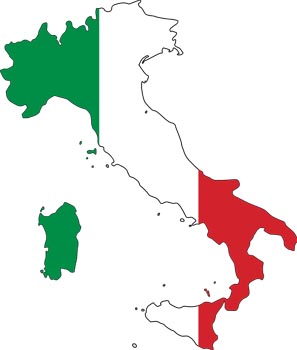By Alfonso Gianni
It may well be that this is a coincidence, but there are many who doubt it, including the leader writers of Italy’s financial daily Il Sole 24 Ore. The fact is that many economic indicators suddenly seem to indicate, exactly one month before the European elections, brighter prospects. The simplest hypothesis, and not overly mischievous, is that there’s a desire to spread optimism about the possibility that the crisis is ending, just to mitigate the effects of a widespread euroscepticism.
So here is some of the most important data. The German economy seems to have taken on new energy, with consequent benefit for the countries that are now part of its specific economic basin and its expanded production system – from Poland to the Netherlands and Austria. Spain has surprised many commentators with growth in the first quarter of 2014 that is higher than that of the previous six years. Even battered Greece has been successful in the placement of government bonds. In fact the demand was seven times greater than supply. Portugal also returned to the international bond market with a strong performance.
In Italy the trumpets are sounding because Fitch, after Moody’s, confirmed a credit rating of BBB + , but with a stable outlook. We await the verdict of the third of big international credit agencies, Standard & Poor’s, but this will come after the Euroepan elections, on June 6. No big deal, but there are those who breathe a sigh of relief, especially our new PM. An optimistic message that will undoubtedly help him to hide under the rug inconsistencies and certain policies lacking budget coverage contain in his pre-electoral decree offering an 80 Euros a month tax break for middle and low income Italians (actually it is 53 Euros on average, as shown by more accurate calculations, once you read the text of the decree).
But if we look at things more deeply, the picture contradicts the superficial optimism. Unemployment, with the exception of Germany and the satellites ( aklthough it should be noted that in Germany ‘minijobs’ conceal a precarious and underpaid social reality that is much less brilliant as it is described), is on the rise everywhere. The level of investment is far from the levels of 2008. Government debt continues to rise in line with the intensification of austerity policies. So-called structural reforms are destroying what remains of the European social model. The watchword of expansionary austerity, given its obvious failure, is giving way to a new found illusion, that of expansionary “precariousness”.
Smoke and mirrors ?
It’s all propaganda then ? All smoke and mirrors ? Not exactly, it is something worse. To be convincing the deceivers must first be convinced of their lies. Also Ludwig Wittgenstein said that “Nothing is so difficult as not deceiving oneself.” Here, then, we willingly forget that if spreads have declined and bonds of troubled European countries have become appealing again, this is due primarily to the financial movements encouraged by the tapering implemented by the Fed in the U.S. and that it is thus somewhat decreased the attractiveness of emerging market countries.
For these reasons, global investors can also once again converge on European markets, settling for more modest returns, once the danger of default has been removed, also thanks to the activism that is giving the ECB, Mario Draghi, to which I shall return. On the other hand, for investors what matters is the balance between return on capital and the ability to recover the full amount invested. When one of the two elements is very unbalanced – either because the yield is almost zero or because the risk of losing the capital is too high – they seek refuge elsewhere.
Thus the renewed attractiveness of the securities of Europe’s periphery, the PIIGS, is not so much due to economic recovery, for this is not evident, but rather global changes that influence where greater returns on financial investments can be secured. We’ll see what happens over the next few days, as the war winds that blow from the east – the Ukrainian pot threatens to explode – make it impossible to forecast the performance of financial markets even in the short term.
Structural reforms
The followers of austerity policies are now banging on about so-called structural reforms with more virulence than before, in order to permanently alter class relations and power within European societies. In fact, the inequities in the distribution of income and wealth are both cause and effect of this crisis. As French economist Thomas Piketty reminds us again in his latest book – Le Capital au XXIe siecle – based on years of study on the trends in wages and economic and social inequalities. Italy is at the forefront of these policies with the decree by Minister of Labour Giuliano Poletti, who wants to put an end to labour law itself and whose proposals even contradict the norms of the European Union itself. Hence the absolutely just complaint about the Italian government brought by a group of lawyers for violation / infringement of Community law.
But if you look closely the reasons that led to Fitch raising its Italian outlook, it turns out that among these appear, in addition to the lower level to other countries of private indebtedness, is the sustainability of our pension system. So there is no need for further reforms of public pensions, which, despite the repeated attacks on it, is so profitable that instead of being funded by the state, as we are led to believe, is actually funding the state.
The limit of the self-deception of neoliberal propaganda was clear from Mario Draghi’s last speech given on April 24 in Amsterdam. The focus of his speech was on how to avoid the danger that an inflation rate that is too low persists, with all the consequences of recession and depression that this would have on the European economy. In essence, the President of the European Central Bank has proposed three measures.
ECB action
A return of so-called conventional measures, a possible new cut in Eurozone interest rates. There is little margin remaining, as they are already at 0.25%. A fall – as he had already talked of some time ago – to 0.1 % would be a useful signal, especially if accompanied by the introduction of negative interest rates on bank deposits at the ECB. This would be an incentive for banks to make money circulate rather than sitting on it. The second measure proposed by Draghi would be for the ECB to purchase of both public and private securities, also in different shapes and forms, as yet unspecified, compared to those implemented by the U.S. quantitative easing. The third measure is probably the most interesting, although for this, as for the others, no start dates have been announced.
The ECB could give provide a new supply of liquidity to the banks. It would be the third Long Term Refinancing Operation ( LTRO ) , after those of December 2011 and February 2012 ( together worth 1.0185 trillion euros). The first two led to banks buying government bonds, and to the famous circumvention of the absurd constraints of the Maastricht Treaty and the Statute of the ECB, unique in the world under which the ECB is forbidden to undertake direct financing of states (the parties backing Alex Tsipras for EC President want to repeal this). But Draghi’s hypothesis would be to make loans conditional on the release of credit to the real economy, to remove the block that preventing euro-billions reaching people and businesses, and that instead simply allowed banks to stabilize their capital.
Paul Krugman is certainly right, to say nothing of others, however, in believing that the actions of the ECB are always irresponsibly too slow and late with respect to the European crisis. At best they parry the more severe blows but do not prevent them, let alone reverse the trend, as only a radical change in the role of the ECB and of the treaties could do this. But it is also true that these decisions announced under the pressure of evidence of the facts help to lay bare the irresolvable internal contradictions of neoliberal and austerity theories.
These theroies will not self-destruct, however. Either a new political and economic culture takes shape in this crisis that is capable of competing for hegemony with neo-liberalism and social liberalism – that is the theory and practice that does not disdain state intervention in support of the institutions of finance capital and at the same time trying to attenuate the most dangerous and socially unsustainable policies via redistribution – or similar ideas will perpetuate, each time in a worsened and gangrenous form.
Beyond Keynesianism
It is about giving life in a diffuse way to a political and economic thinking that certainly goes beyond Keynesianism, but without
ignoring a new ecological awareness and a sense of the limits of growth, but at the same time make a “tiger’s leap into the past ” – to paraphrase Walter Benjamin – by reconnecting to Marxism, the most radical critique of capitalist political economy. In other words, you cannot beat the primacy of finance without rethinking the content and structure of the real economy. You cannot only boost consumption by distributing money, especially when this is likely to be used more to cover previous debts or set aside for savings, rather than being put back into circulation. Not all consumption is useful in a revival of a different economy.
Even in the current sad situation there are examples in the positive, demonstrating that concrete objectives can be met. By studying tax revenue, the Research Department of Italian parliament and the think tank Cresem have recently come to the conclusion that in 2013 nearly two percent of the GDP came from the building restoration , by the maintenance and renovation of housing leading to energy-saving. This came about as families made use of tax incentives introduced by the second center-left government led by Romano Prodi, and which survived in subsequent years.
It’s just a small and fragile example. But you can already imagine how our country could be transformed, a new real economy relaunched – meeting the needs for housing and avoiding any fresh uncontrolled development of the territory, creating hundreds of thousands of new jobs – if building restoration, renovation and preservation of existing buildings, transformed in order to guarantee the maximum energy savings possible, was not simply to happen thanks to the tax incentives for individuals and families, but directly from public spending by the state under a grand plan for jobs and urban and suburban regeneration.
Translation/ edit by Revolting Europe





Discussion
No comments yet.